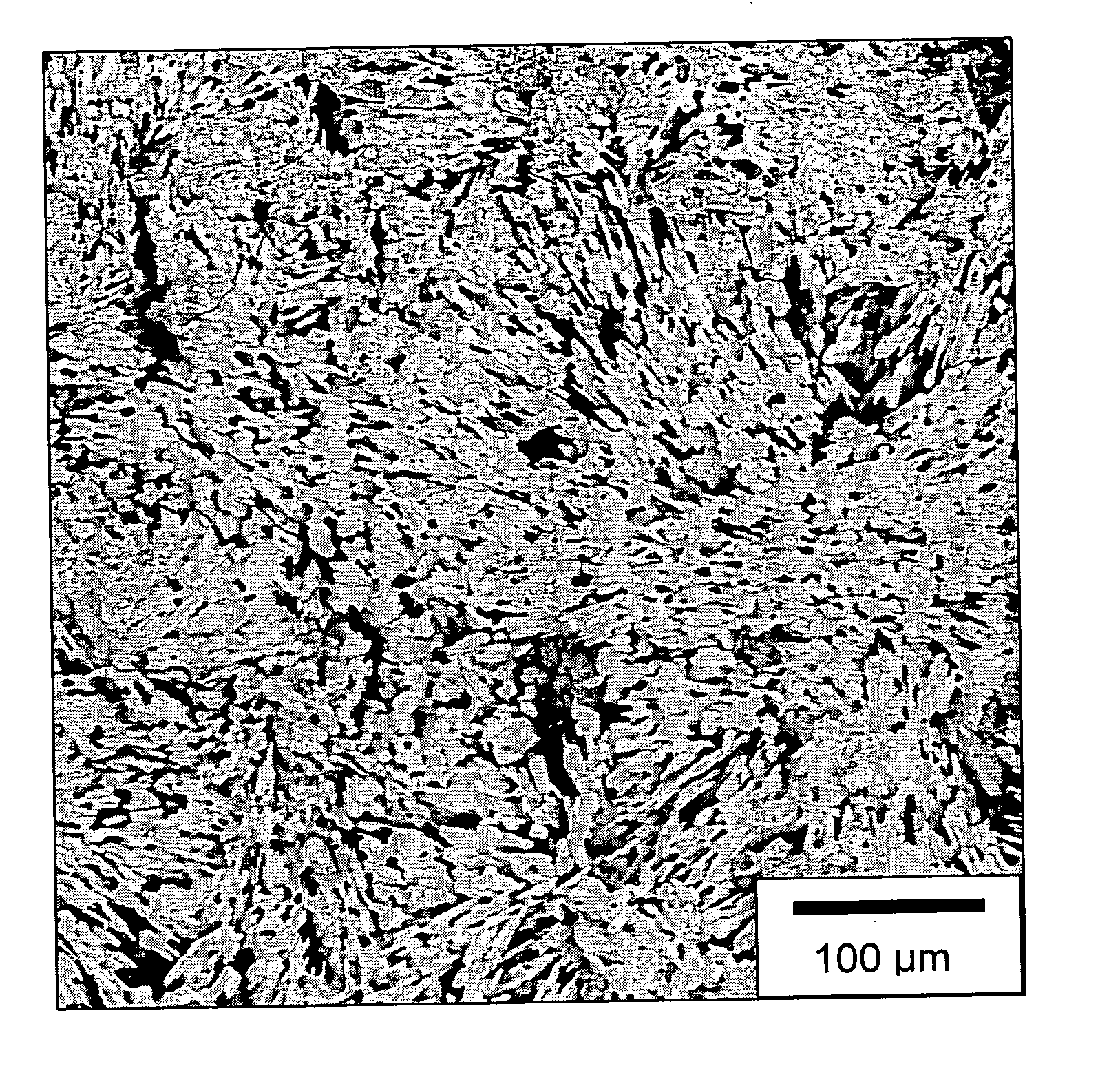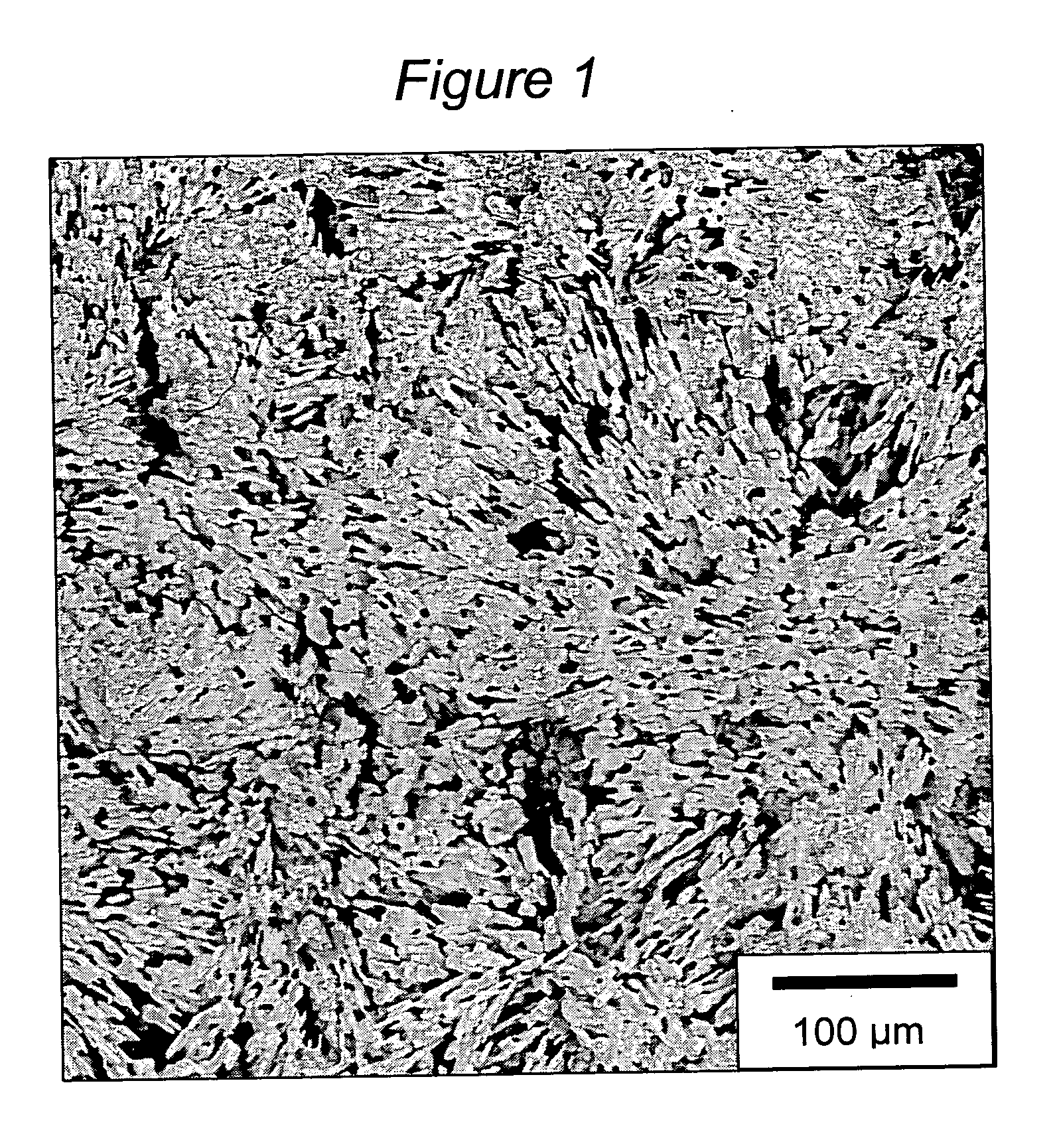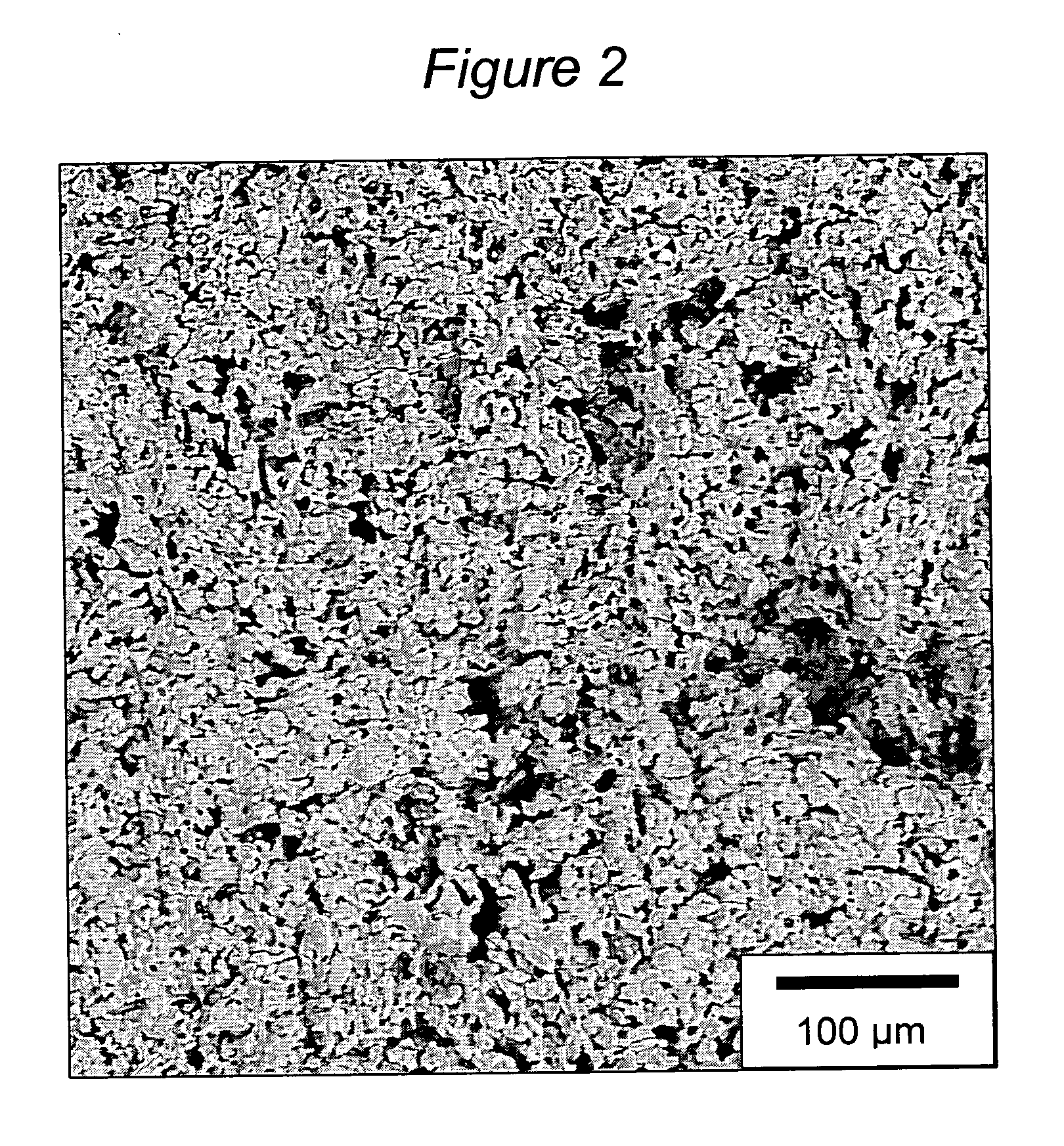Narrow pore size distribution aluminum titanate body and method for making same
- Summary
- Abstract
- Description
- Claims
- Application Information
AI Technical Summary
Benefits of technology
Problems solved by technology
Method used
Image
Examples
examples
[0037] The invention is further illustrated with the following non-limiting examples. Inventive and comparative samples are prepared by admixing the inorganic raw materials, metal oxide additives, and pore-forming agents with 4 to 6 wt % methyl cellulose binder, 0.15 wt % triethanol amine, 1% tall oil, and 14 to 18 wt % water. The mixture is plasticized in a stainless steel muller and extruded as 5 / 16-inch diameter rod and 1-inch, 2-inch, or 5.7-inch diameter honeycomb. Parts are dried and then fired in a gas or electric kiln at 1400° to 1500° C. and held for 4 to 10 hours.
[0038] After firing, the porosities of the samples are characterized by mercury porosimetry, the CTEs measured by dilatometry, and the modulus of rupture (MOR) by the four-point method on 5 / 16-in diameter rods. MOR values are reported in pounds per square inch (psi). Some samples are also crushed and their crystalline phases identified by powder x-ray diffractometry. Pore diameters (d10, d50 and d90) are in micro...
PUM
| Property | Measurement | Unit |
|---|---|---|
| Temperature | aaaaa | aaaaa |
| Temperature | aaaaa | aaaaa |
| Temperature | aaaaa | aaaaa |
Abstract
Description
Claims
Application Information
 Login to View More
Login to View More - R&D
- Intellectual Property
- Life Sciences
- Materials
- Tech Scout
- Unparalleled Data Quality
- Higher Quality Content
- 60% Fewer Hallucinations
Browse by: Latest US Patents, China's latest patents, Technical Efficacy Thesaurus, Application Domain, Technology Topic, Popular Technical Reports.
© 2025 PatSnap. All rights reserved.Legal|Privacy policy|Modern Slavery Act Transparency Statement|Sitemap|About US| Contact US: help@patsnap.com



